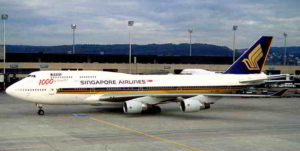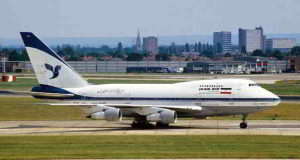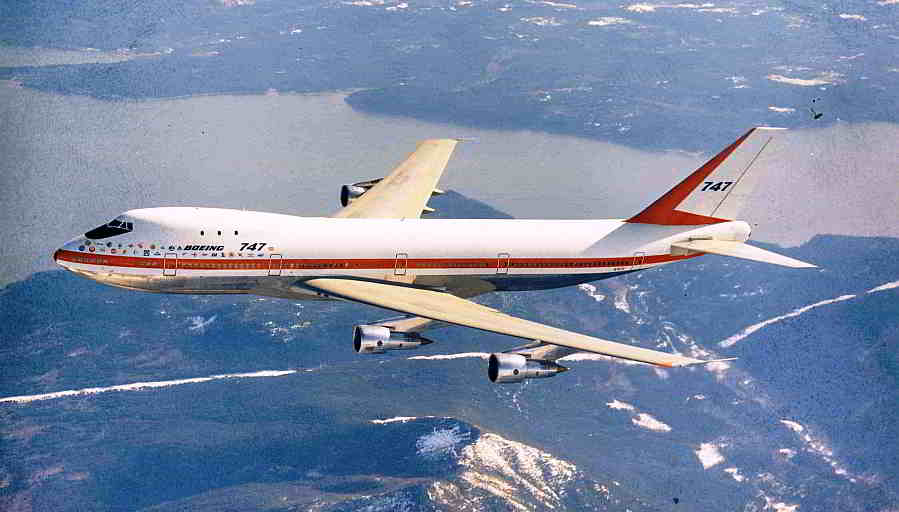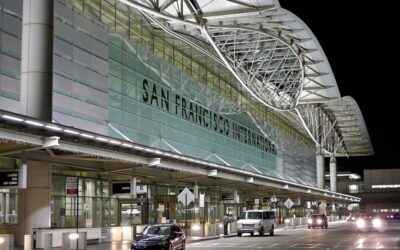UPDATED: There were many iconic aircraft in the history of aviation that revolutionized air travel. The Boeing 707 and 747; McDonald Douglas DC-10; Lockheed Tristar L1011; the French Caravelle, and of course, the supersonic Concorde. Even before the era of jets, we had aircraft like the Boeing 337 Stratocruiser, Short S.23 Empire flying boat, Boeing 314 Clippers (1939) / Yankee Clipper (Pan Am), Focke-Wulf Fw 200 Condor (1938), de Havilland Comet (1952), and DC-3 (Dakota). But none have made transcontinental air travel so comfortable and pleasant as the majestic Boeing 747, which the media dubbed “Queen of the Skies” or “Jumbo Jet.” Even the POTUS (the President Of The United States) has exclusive access to two 747s with call signs Air Force One and Air Force Two (standby jet). The Airbus A380 is also an incredible aircraft to fly on. Sadly, it will eventually be phased out, like the 747, making way for fuel-efficient, twin-engine aircraft such as Boeing 777, 787, and Airbus A350. Well, here are my fond memories of the Boeing 747.
Pleasant encounters and fond memories
My most recent encounter with this beautiful jet was in January 2020, when I took an Air-India flight from Mumbai to Hyderabad (AI-965). As I approached my gate, I was delightfully surprised to learn that the aircraft I would be flying would be a Boeing 747! I somehow missed that on my boarding card and ticket, and perhaps this assignment was done closer to the flight time. Airlines tend to club flights and use larger aircraft for commercial purposes — even for short routes. Well, my Air-India flight was heading to Jeddah via Hyderabad, and it was filled with pilgrims.
I was assigned a seat near the main door just behind business class and near the spiral staircase leading to the upper deck (first class). As I buckled up, my enthusiasm matched that of an excited, wide-eyed kid going on a carousel for the first time. I looked around and admired the interiors of the aircraft. I peered outside the window and took in the large wings and the gigantic engines.
Then I wondered what it would be like “upstairs.” So I put on my best smile and requested the cabin attendant if I could take a peek at the upper deck during the flight. And she approved. People continued to board, and I finally got the nod to go upstairs. I leaped up the spiral stairs. It was quieter on the upper deck, and the ceiling was lower than I expected. The cabin was narrower with the cockpit further ahead. I had never been on an upper deck before, although I saw one in airplane movies like Airport 75, Airport 77, and Air Force One.
The upper-deck lounge was a major draw when the 747s came into services in the early 70s. Many well-heeled passengers were willing to pay the hefty surcharge for a premium ticket that gave them access to the upper-deck lounge. It had the same appeal as the private first-class suites of the A380 today.
In my childhood, I saw Air-India 747s flying low, circular routes on training flights above my home in Mumbai. And as I traveled around the world for work, I hopped on the majestic 747s many times (Lufthansa, United, Singapore Airlines).

Singapore Airlines Megatop
I keenly followed the development of the 747 series over the years. With each new version, the upper deck was stretched further. Singapore Airlines named their 747 aircraft as “Megatop.”
There is a cargo/freight version as well, the 747F, and a Combi version for both passengers and cargo. The cargo version is interesting as the nose flips up to allow for the entry of cargo pallets from the front of the fuselage, below the cockpit. This feature is also seen in military transport aircraft such as the Lockheed Martin C-5M Super Galaxy, Antonov AN-124, and Antonov AN-225.
Special Performance version

Iran Air, 747SP
But did you know there was a smaller version of the 747 called the 747SP (Special Performance)? While it had the same wingspan as a regular 747 aircraft, the fuselage was 47 ft (14 m) shorter, and the main deck doors were reduced to four on each side. This particular aircraft was designed for long-range flight, and Boeing introduced it in the early 70s to compete with other wide-body aircraft such as the McDonald Douglas DC-10 and Lockheed Tristar L1011. You might see an Iran Air Boeing 747SP parked at/flying out of Chhatrapati Shivaji Maharaj International Airport Mumbai; I saw one two years ago. The other airlines who have/had one in their fleet are South African Airways and Pan Am. Many other airlines used the 747SP temporarily. The royal families ordered some. The aircraft is no longer in production, and you might be lucky and spot one at a museum.
Whenever I take a flight out of Mumbai, I peer out of the window as the aircraft rushes past the hangers at Mumbai airport — to see the parked Air India 747s near the hangers. The Air India jumbos had livery and interiors modeled on old Indian palaces with the “Maharaja” or Indian king as the airline’s mascot. Each aircraft was named after an Indian king: Emperor Ashoka, Emperor Kanishka, etc.
The 747s are retiring
The 747s have been in service since the early 70s but Boeing’s order books now see little or no demand for this aircraft. And it’s the same case for the Airbus A380. Airplanes have been parked on tarmacs and runways since COVID-19 came along. It is expensive to park aircraft and not use them, and we had written an article earlier about this. The other factor is the rising cost of aviation fuel. Four engine aircraft are fuel guzzlers and an airline spends more than 50% of its operational cost on fuel. Today airlines are opting for twin-engine aircraft like the Boeing 777, 787, and Airbus A350 — because they can fly as far as the Boeing 747 and consume less fuel. Yes, they might not carry as many passengers as a fully loaded A380 or the latest 747 aircraft, but that is not the prime concern. Airlines also see demand for shorter flights as passengers do not mind layovers.
And that’s why airlines are retiring their 747 aircraft.
This week British Airways, which owns the largest 747 fleet in the world, with 31 aircraft, announced it will be retiring its 747s. And on the same day, Qantas Airways announced it was also retiring its 747s.
Qantas Airways’ last 747 took to the skies for a farewell flight on Friday, 17 July. The plane flew over Canberra. ABC News reported that the 747 will fly out from Sydney next week, and head for storage in California’s Mojave desert, before being handed over to a new, unknown owner.
Air France, Delta, and United had already retired their fleets.
So what happens to the 747s when they are decommissioned from service? Some (as in the case of Singapore Airlines) are converted into freight transport. The rest are sent to aircraft “graveyards” or “boneyards” such as the one in the Mojave desert. There they are dismantled and their parts are sold as spares. The engines, in particular, have a high value. In some cases, the planes are sold to entrepreneurs where they are converted into restaurants or tourist attractions. And the planes that are in good conditioned may be refurbished and sold to private companies or wealthy businessmen.
There’s a nice article about what happens to planes after retirement here.
As the “queen of the skies” or “jumbo jet” flies into the sunset for the last time, I would like to thank all the engineers at Boeing, and the maintenance engineers and crew members at all the airlines. They made flying the 747 a comfortable and pleasurable experience. Long, non-stop flights are stressful. A spacious aircraft cabin with good inflight entertainment and delicious meals takes the strain out of long trips. And we got that first on the 747 aircraft.
Thank you, Boeing! Goodbye, Jumbo Jet!
For content syndication enquiries, write to info@digitalcreed.in









